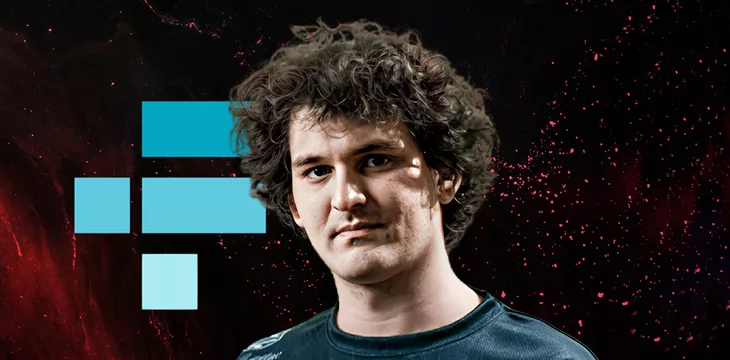|
Getting your Trinity Audio player ready...
|
Sam Bankman-Fried (SBF) is coming off the week from hell, while what’s left of his collapsed ‘crypto’ empire keeps uncovering evidence that everyone who worked for FTX was in on the scam.
Last Thursday (21), the U.S. Court of Appeals for the Second Circuit rejected SBF’s bid to secure release from the Manhattan Detention Center ahead of the October 3 start of his criminal trial. SBF is facing multiple counts of fraud, money laundering and other charges stemming from last year’s collapse of his FTX digital asset exchange and its affiliated offshoots.
Earlier in the week, a three-judge panel of the Second Circuit appeared distinctly unmoved by SBF’s pleas for reinstate his release on bail, which was revoked in August after U.S. District Judge Lewis Kaplan lost patience with SBF’s efforts to collude with/intimidate potential trial witnesses. Things didn’t look good, as Judge William Nardini told SBF’s attorneys that their client “makes his own bed and he sleeps in it.”
On Thursday, the Second Circuit issued its formal rejection of SBF’s bid for freedom, finding probable cause that SBF “acted with unlawful intent” to engage in witness tampering. The Second Circuit further found that possible options other than locking SBF up were not “a workable solution longer term.”
The same day, Judge Kaplan dealt SBF’s defense another blow by granting most of the prosecution’s requests to bar testimony by SBF’s ‘expert witnesses.’ Kaplan agreed that SBF’s team had failed to explain why consultants Thomas Bishop and Brian Kim were crucial to their client’s defense. Ditto for law professor Bradley Smith, whose proposed testimony Kaplan found “irrelevant to the issues at trial.”
U.K. barrister Lawrence Akka got the boot because he planned to explain the nuts and bolts of FTX’s terms of service, which Kaplan pointed out was the court’s job. Dr. Joseph Pimbley (another consultant) was tossed because he would offer only “semantic camouflage” re SBF’s alleged ignorance of flaws in FTX software. Put another way: “None of Dr. Pimbley’s vague opinions would be relevant to the issues at this trial.”
Consultant Peter Vinella was ruled equally irrelevant, with some of his opinions found to be “not the product of any scientific, technical, or specialized knowledge,” while other musings were deemed to be “thinly veiled attempts to state an inference regarding the defendant’s mental state at the time of the alleged crimes.” Much of business professor Andrew Di Wu’s testimony was deemed to be “mere narration” that lacked expertise or methodology.
Kaplan said there might be opportunities for some of these witnesses to appear in court should a prosecution witness offer testimony that SBF’s witnesses might be able to rebut. But in a further twist of the knife, Kaplan rejected SBF’s bid to exclude prosecution witness Peter Easton, an accounting professor at the University of Notre Dame, in part because Kaplan found all of SBF’s objections “meritless or moot.”
The Second Circuit rejection and SBF’s 0-8 run against Kaplan proved the perfect capper to a week that also saw the court-appointed overseers of what’s left of FTX launch a civil action against SBF’s parents Allan Joseph Bankman and Barbara Fried to reclaim millions of FTX customer funds that were improperly diverted to the couple. But the FTX Debtors group’s pursuit of those who unjustly enriched themselves at FTX customers’ expense is by no means done.
FTX’s friends & family plan
On Thursday, FTX Debtors launched a civil action in the U.S. Bankruptcy Court in Delaware against five individuals and two companies linked with FTX’s Hong Kong-based affiliate. The suit seeks to reclaim US$157.3 million that the accused collectively withdrew from FTX and its U.S.-licensed offshoot FTX.US in the period immediately preceding the FTX Group’s November 11, 2022 bankruptcy filing.
Four of the individuals—Matthew Burgess, Michael Burgess, Huy Xuan ‘Kevin’ Nguyen and Jing Yu ‘Darren’ Wong—worked for a company called Salameda Ltd (evidently a portmanteau of FTX’s market-maker Alameda Research and former FTX Digital Markets co-CEO Ryan Salame). Lesley Burgess is Matthew’s and Michael’s mother.
In addition to their work at the SBF-controlled Salameda, Michael Burgess, Nguyen and Wong also held “senior-level” roles at various FTX Group companies, including Alameda and West Realm Shires (FTX.US parent), while Matthew Burgess provided customer service for FTX.com and FTX.US.
Michael Burgess, Nguyen and Wong had left SBF’s payroll by January 2022, after which they continued to trade digital assets via FTX accounts. They were trading whales, averaging between $100 million and $400 million in monthly trading volume between January-November 2022.
Most of the assets they traded had originated with their former employer during the period spanning July 2019 to January 2022. This included 13.1 million in FTX’s in-house FTT token, over 1 million SOL and $4 million in U.S. dollars issued as ‘bonuses.’ Wong proved a particularly savvy trader, making more than $70 million from selling FTT on FTX.com, around $30 million of which he received “just days prior” to FTX’s bankruptcy filing.
As it became apparent that FTX wasn’t long for this world, there was a logjam as customers tried to get assets off the exchanges. Matthew Burgess, who was still on SBF’s payroll at the time, agreed to “push out” over $73 million in pending withdrawal requests from his brother Michael’s FTX.US accounts, while “misrepresenting” these accounts as his own.
Matthew and his mother also managed to successfully withdraw “substantially the entire balances” of their own FTX accounts, with the final withdrawals coming “just hours” before FTX.com halted withdrawals on November 8. Of the total $157.3 million the accused managed to get off FTX, $123 million was withdrawn “on or after November 7.”
FTX Debtors recently disclosed there were $25 billion in withdrawals during the 90-day period preceding FTX’s demise, with $11.2 billion of that coming in the final 15 days. While some of those withdrawals would represent customers alarmed by the public drama between SBF and Binance founder Changpeng ‘CZ’ Zhao, any cash that can be clawed back from whales operating on inside information could dramatically boost what’s left for distributing to the hapless minnows.
Everything must go!
The idea that there might be significant clawbacks or hidden value in some of FTX’s moribund assets is spurring debt investors to buy FTX customer/vendor claims on the cheap. Bloomberg reported Thursday that established debt investors had purchased over $250 million worth of such claims since the year began, with the actual total possibly much higher. Some claims are reportedly changing hands multiple times in a reflection of growing investor/vulture interest.
One of the more unusual debt deals involves a fortune cookie distributor—likely New York-based ad agency OpenFortune, with which FTX teamed years ago to give wonton lovers a post-meal doubletake—selling a $23 million debt to Hudson Bay Capital Management.
In the immediate aftermath of FTX’s collapse, you could snag customer debt for as little as 12¢ on the dollar. That has since surged to the 30-35¢ range as FTX Debtors continues to find tangible assets among SBF’s incomprehensible accounting and Byzantine corporate structure.
FTX’s rivals are also sniffing around to see what strategic assets they might pick up on the cheap. Fortune reported this week that the Coinbase (NASDAQ: COIN) and Crypto.com exchanges had expressed interest in FTX’s European offshoot due to its lucrative derivatives trading business, particularly its perpetual futures markets.
Coinbase is said to have recently abandoned its pursuit of FTX Europe, despite this spring’s lackluster launch of Coinbase’s Bermuda-licensed derivatives exchange and Coinbase’s desperate need to find new revenue streams.
While FTX Europe was profitable, the asking price may have deterred Coinbase, as SBF acquired the operating license that powered FTX Europe for $376 million in 2021. SBF is considered to have grossly overpaid, but even a fraction of that might be too rich for Coinbase to ante up given regulatory uncertainties in the European Union and the extra scrutiny that any reconstituted FTX enterprise would attract.
Since May, FTX Debtors has been soliciting interest in the potential sale of ‘FTX 2.0’—aka a rebooted international and/or U.S. exchange with the same software and possibly the same brand—claiming to have contacted 75+ potential bidders, including other exchanges, ‘strategic buyers’ and ‘financial buyers.’ Some of these solicitations have sparked enough interest to proceed to a ‘Round 2 process’ involving due diligence and “bilateral info sharing.”
Up, up and away
Finally, FTX Debtors is fighting with Island Air Capital (IAC), a Bahamian aircraft business, over control of two private jets. Before it imploded, FTX allegedly lent IAC $28.4 million to buy a Bombardier Global 5000 and an Embraer ERJ-135BJ Legacy 600. FTX also signed a term sheet indicating its intention to invest $17 million in Trans Island Airways (TIA), the company that operated the planes on IAC’s behalf.
IAC’s beneficial owner and TIA CEO Paul Aranha—who says he had a “handshake deal” with SBF on the unsecured, no-interest loan—wants the bankruptcy court to lift a stay imposed on the operation of the jets. IAC claims to have repaid $11 million of this loan into an FTX customer account while also allegedly spending millions improving and maintaining the planes.
FTX Debtors isn’t buying the idea that the millions that SBF gave Aranha after this hearty handshake represented an actual loan and has therefore laid claim to full ownership of the planes. IAC is warning that it’s not going to go on paying for maintenance of the planes without some certainty they’ll be able to keep them.
As for us, we’ve long since triggered our mental ejection seat. If anyone chooses to launch a class action seeking redress for all the mental anguish and emotional trauma inflicted upon us by SBF, consider us onboard.
Follow CoinGeek’s Crypto Crime Cartel series, which delves into the stream of group—from BitMEX to Binance, Bitcoin.com, Blockstream, ShapeShift, Coinbase, Ripple,
Ethereum, FTX and Tether—who have co-opted the digital asset revolution and turned the industry into a minefield for naïve (and even experienced) players in the market.

 04-25-2025
04-25-2025 





